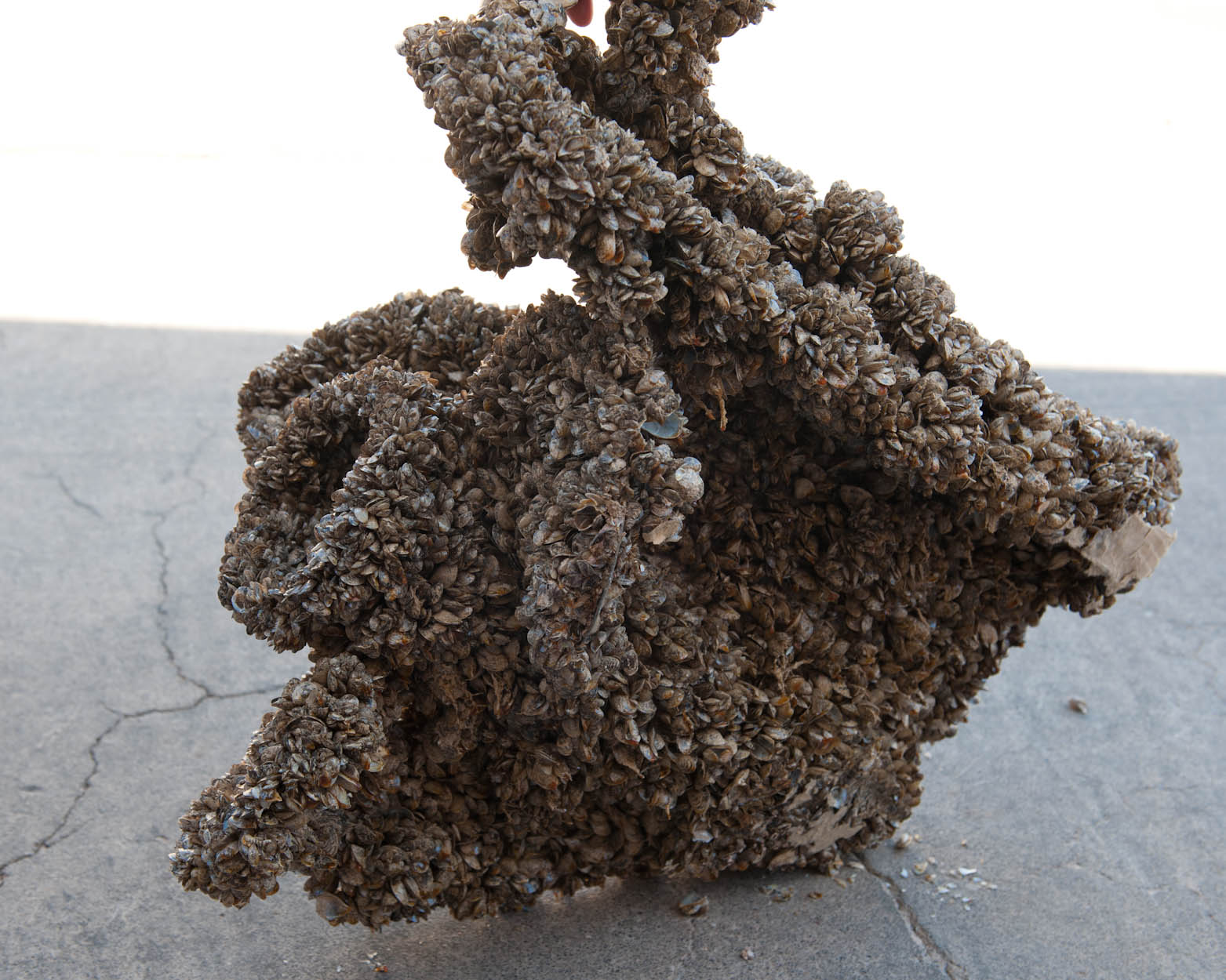- Reclamation
- Quagga and Zebra Mussels
Quagga and Zebra Mussels
Two species of dreissenid mussels, Dreissena polymorpha (zebra mussel) and Dreissena rostriformis “bugensis” (quagga mussel), have become established in freshwater lakes, reservoirs, and rivers in the United States. Invasive dreissenid mussels pose significant challenges for Reclamation and all agencies and industries that manage water. Invasive mussels are prolific breeders and settle on or within water facility infrastructure such as water intakes, gates, diversion screens, hydropower equipment, pumps, pipelines, and boats. Infested water and hydropower infrastructure can fail or choke off water transmissions. Invasive mussels negatively impact the natural ecology, which can be detrimental to native and endangered species, including native fisheries.Maintaining and operating water supply and delivery facilities, water recreation, and other water dependent industries and economies in mussel infested water bodies are dramatically more expensive and complex. Public recreation may also be severely impacted by mussel infestations, from shell fragments degrading swim beaches to increased requirements and cost for boaters to have their watercraft inspected and decontaminated, and potential impacts on populations of game fish.
Safeguarding the West
In 2017, the Department of the Interior released a package of actions and initiatives developed through collaboration with western governors and federal, state and Tribal agencies to protect areas in the West from the economic and ecological threats posed by invasive mussels.
More than 70 federal, state and tribal entities came together to develop 41 action items to develop the document, Safeguarding the West from Invasive Species.
In February 2019, DOI published its second Safeguarding the West progress report and provides a status update on activities that occurred in 2018. DOI released its first progress report in February 2018. While much has been accomplished, more work needs to be done. DOI will continue to fulfill its commitments in Safeguarding the West and work with partners to meet the most pressing needs to protect western waters from invasive mussels and other aquatic invasive species. Read More →
Announcements
-
Presentation
Tiny Mussels: Big Dam Problem
The Bureau of Reclamation oversees water resource management in the western United States and is responsible for the operation of diversion, delivery, storage and hydropower facilities. Invasive mussels were first detected in the west in 2007. Their settlement in Reclamation's hydropower facilities has caused both operation and maintenance issues. In response, Reclamation established an early detection and monitoring program and conducts research to develop methods to monitor, control, and predict mussel spread. Reclamation collects and receives approximately 1,500 early detection samples each year from 223 water bodies in 16 western states. These samples are analyzed by microscopy and molecular methods, providing early detection and triggering immediate containment action. This allows three to five years to make management decisions before full scale infestation occurs. Reclamation's research projects focus on developing control methods to prevent mussel settlement at hydropower facilities and reduce mussel populations in reservoirs, risk mapping and predictive modeling of mussel spread in the West, and studies designed to help better understand the impact and cost of mussels to Reclamation. View Webinar →
-
Training
Rapid Response Exercise at Lake Roosevelt, Washington
Reclamation provided the Washington Resource Conservation Office with $150,000 to plan and conduct a rapid response exercise at Lake Roosevelt. The exercise took place in October 2019. The exercise was to apply field concepts in practice, simulating actions that would be taken in the event actual adult quagga or zebra mussels and/or veligers were discovered. The long term goal is to provide personnel the knowledge and experience in dealing with an actual event and to build the local partnerships with those who may be affected or a part of any operation to attempt eradication or prevention activities.
-
Research
Joint research project studies genetic structure of Quagga Mussel population in southwestern United States
Quagga mussels have infested the southwestern United States after being first identified in Lake Mead in 2007. Since then the species has spread throughout the Colorado River, from Lake Powell to Imperial Dam. To help inform control and management strategies, Reclamation and the U.S. Army Corps of Engineers recently published a scientific paper "Patterns of Genetic Structure Among Invasive Southwestern United States Quagga Mussel (Dreissena rostriformis bugensis) Populations" in The Southwestern Naturalist. Read More →
-
Presentation
Webinar: Invasive Mussel Genomics, Sequencing the Dreissenid Genome
This webinar is part of a miniseries on the genomics of invasive mussels hosted by the Invasive Mussel Collaborative. Part two of the miniseries covers efforts by the University of Minnesota and the Bureau of Reclamation to sequence the genome of zebra and quagga mussels, respectively. Read More →



